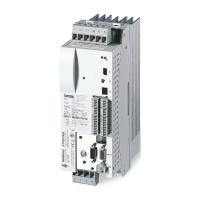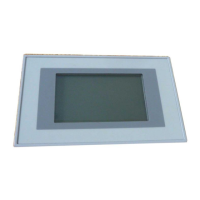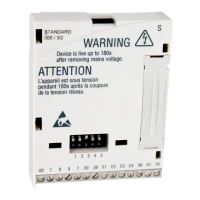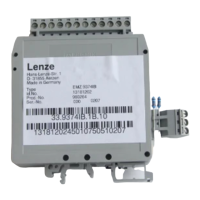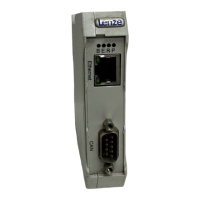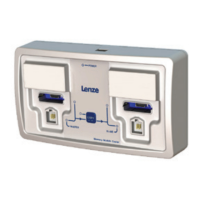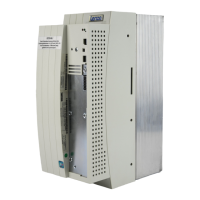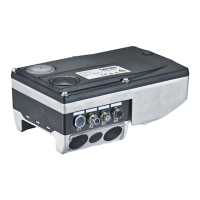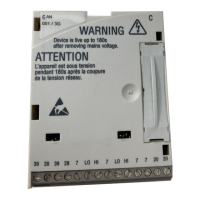Commissioning
Selection of the operating mode
Operating mode "Interpolated Position Mode" (IP−Mode)
6
161
EDBCSXM064 EN 11.0
6.14.1 Operating mode "Interpolated Position Mode" (IP−Mode)
The "IP mode"enables a travel according to setpoint selection.
Settings
ƒ Select "IP mode": C5000 = 7
– The code C5000 (4C77h) is written via parameter data channel (SDO, 345).
ƒ Selection confirmation: C5001 = 7
– Code C5001 (4C76h) can be read out via parameter data channel (SDO) in order to
query whether the operating mode in the drive has been changed already.
– Write/read access via SDO may take typically 30 ... 50 ms.
ƒ Enable "IP mode": Ctrl1.Bit12 = 1 (TRUE)
– The travel according to setpoint selection has not been started yet due to
changeover to "IP mode". The "IP mode" must be enabled by control bit
(Ctrl1.Bit12 = 1).
Operating mode−dependent bits in the control word Ctrl1
Bit Name Value Response
1 Release limit switch
Only with user software £1.x (A−SW see nameplate):
0 Limit switch monitoring is active
1 Limit switch monitoring is not active:
After a TRIP−RESET, the activated hardware limit switch can be
retracted.
12 Enable IP mode
0 Without function
1 Enable IP mode so that the drive follows the cyclically defined
setpoints.
13 Activate Pos_Latch
0 Without function
1 Touch probe storage is activated.
The TP position is detected with the next selected touch probe edge
( 162).
Note!
The external setpoint can only be read if the "IP mode" has been enabled
(Ctrl1.Bit12 = 1). Otherwise, the drive must control the motor with the internal
setpoint.
Operating mode−dependent bits in the status word
Bit Name Value Response
1 Enable IP mode
0 IP mode is not enabled
1 Enable IP mode
2 Evaluate Pos_Latch
0 No touch probe signal occurred
1 The active touch probe edge has completed the position detection.
3 Pos_Latch error
0 No error during position detection
1 Error during position detection à Function abort
4 Touch probe sensor
0 No touch probe
1 Touch probe sensor is active



